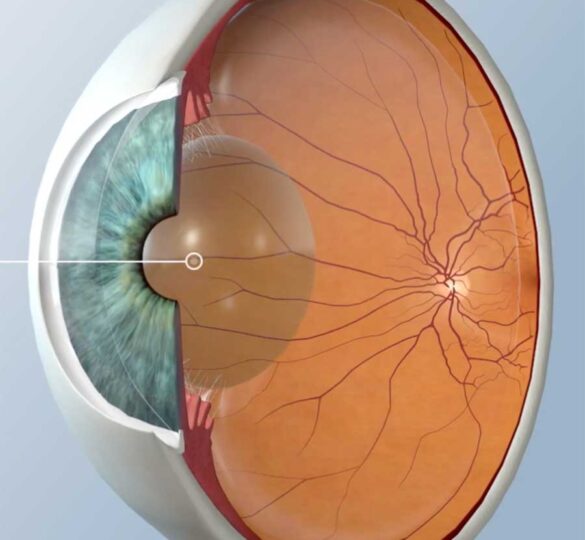Cataract Surgery and Glaucoma
A number of factors affect the decision of whether to surgically remove cataracts in the patient with glaucoma.

A cataract is a natural clouding of the lens in the eye. Since the lens is responsible for focusing objects clearly, if the lens is cloudy seeing clearly becomes difficult. Usually the cataract does not interfere with vision initially, and cataracts are not considered an urgent problem. Your ophthalmologist will probably detect a cataract long before you notice it.
A Natural Process
Again, cataracts are a natural process and, thus far, an unavoidable part of aging. As we age the chances of having a cataract increases. For example, it is estimated that in the U.S. less than 4% of men and 10% of women between the ages of 55 and 64 years have visually significant cataracts. Between the ages of 65 and 74 years, 14% of men and 24% of women experience cataracts. The incidence is even higher in those over 75 years old. Because age is a risk factor for glaucoma as well, many patients with glaucoma also have cataracts.
Although all of us will eventually develop cataracts, the good news is that the treatment for cataracts is very successful with the latest surgical techniques. When treatment for a cataract is warranted, it is surgically removed and an artificial lens is put in its place.
Glaucoma, however, damages the optic nerve, the critical structure that transmits the visual signal from the eye to the brain. Unfortunately, in contrast to cataracts, we are not yet able to repair or replace the optic nerve. This important difference affects the management of these two diseases when they co-exist in the same eye.
Tailored Treatment
The ophthalmologist tailors the specific treatment plan for the individual eye to maximize the benefits and minimize the risk to the eye. The ophthalmologist balances many factors that affect the decision as to when and how aggressively the glaucoma and cataract should be treated, including whether the two diseases should be treated at the same time or separately.
There are a number of options available to glaucoma patients with cataracts, and each situation must be assessed individually. If the cataract does not interfere with the glaucoma patient’s activities significantly then treating the glaucoma and monitoring cataract progression—but not removing the cataract immediately—may be an appropriate plan.
Often, the glaucoma can be managed with laser treatment and anti-glaucoma medications. When this is possible, it allows the ophthalmologist to monitor the eye while the cataract worsens.
For patients with mild glaucoma that is stable we might consider surgically removing the cataract and treating the glaucoma with pressure-lowering medications or laser treatments. Cataract surgery alone on an eye with glaucoma will sometimes lower the pressure in the eye.
For patients with more serious glaucoma and the need for cataract surgery, a combination cataract removal and glaucoma filtering procedure can be considered. For patients using multiple anti-glaucoma medications, a combination procedure such as this would be appropriate.
Combination procedures, however, are not for everyone. The decision to perform a combination procedure depends on the number of anti-glaucoma medications used, how mature the cataract is, and the state of the glaucoma. As with any surgery, it is important to discuss the risks and benefits of cataract and combination surgery with your ophthalmologist to determine what is best for you.
Video: Cataracts Information
This video describes cataracts and how cataracts surgery is performed.
Article by Andrew G. Iwach, MD. Last reviewed on April 19, 2022.

Andrew G. Iwach, MD
Andrew G. Iwach, MD, is Associate Clinical Professor of Ophthalmology at the University of San Francisco, Executive Director of the Glaucoma Research and Education Group in San Francisco, and a faculty instructor at the California Pacific Medical Center Department of Ophthalmology.